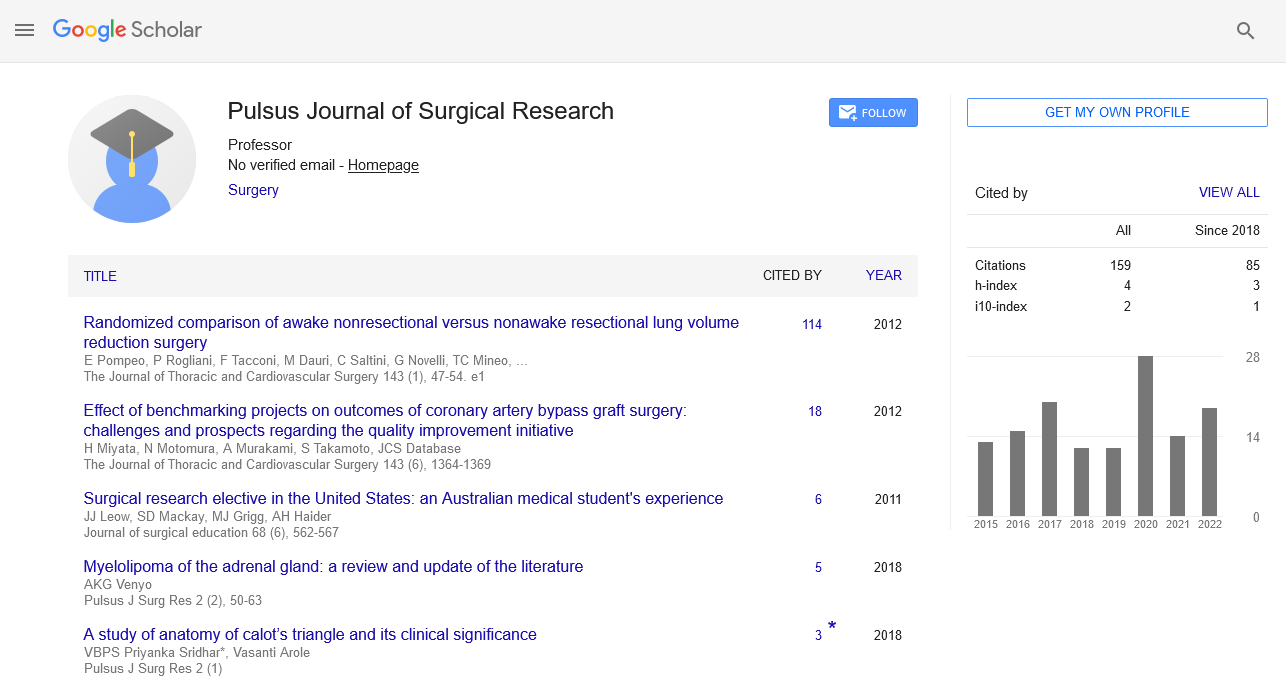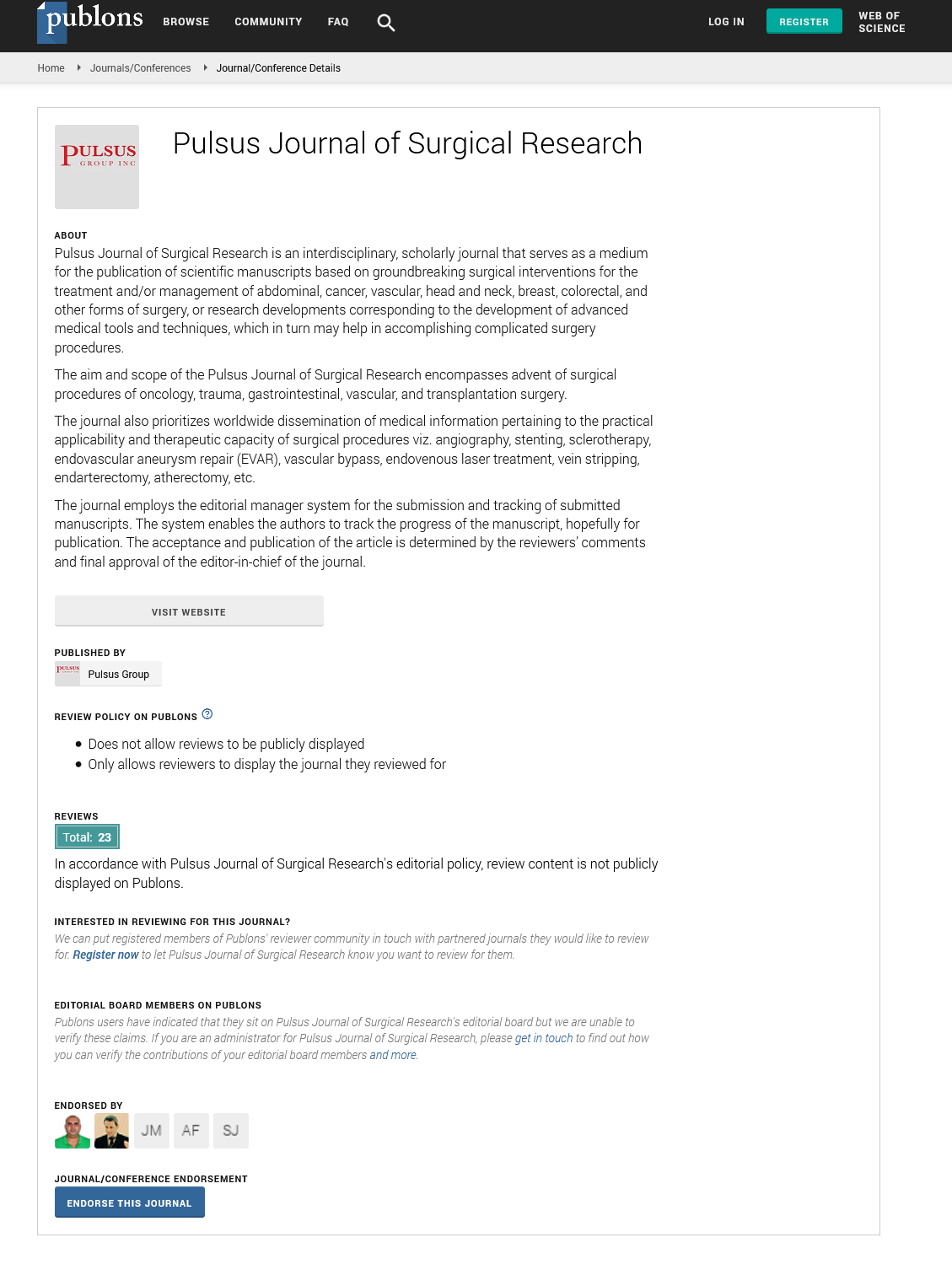Hysterectomy; abdominal versus vaginal route: A comparative analysis of the indications and postoperative outcome
Received: 20-Feb-2019 Accepted Date: Mar 07, 2019; Published: 15-Mar-2019
Citation: Folorunsho Benard Adewale. Hysterectomy; abdominal versus vaginal route: A comparative analysis of the indications and postoperative outcome. Pulsus J Surg Res. 2019;3(1):90-93
This open-access article is distributed under the terms of the Creative Commons Attribution Non-Commercial License (CC BY-NC) (http://creativecommons.org/licenses/by-nc/4.0/), which permits reuse, distribution and reproduction of the article, provided that the original work is properly cited and the reuse is restricted to noncommercial purposes. For commercial reuse, contact reprints@pulsus.com
Abstract
Background: Hysterectomy is the surgical removal of the uterus; which may also involve removal of the cervix, ovaries, fallopian tubes and other surrounding structures. It is a major gynecological surgical procedure performed for malignant and benign conditions of the uterus. Different routes are available to access the uterus with each having its associated indications, contraindications, and complications; however, the choices for a particular procedure at any given time are inclined by diverse factors.
Aim: To compare abdominal and vaginal hysterectomies vis-a-vis indications, biosocial variables, duration of hospital stay, complications of procedure and case fatality between abdominal and vaginal hysterectomy.
Methods: This is a retrospective study carried out at Federal Medical Centre, Bida comparing abdominal and vaginal hysterectomy performed between 1st January 2012 to 31st December 2016. The case notes of the patients were retrieved from the Health Information Department, data was collected using a proforma and subsequently evaluated.
Results: A total of 105 gynecology hysterectomies were done between 1st January 2010 and 31st December 2014. Out of 661 gynecological surgeries, a hysterectomy rate of 15.9% was noted. The mean age for all the hysterectomies was 53.3+13.2 while the mean parity for both hysterectomies was 5.5+3.2. Uterine fibroids were the commonest indication for abdominal hysterectomy 28 (40.6%), followed by dysfunctional uterine bleeding 17 (24.6%). Others are ovarian tumor 7 (10.2%), endometrial hyperplasia 6 (8.7%), endometrial and cervical carcinoma 4 (5.8%) apiece, endometriosis 2 (2.9%) and CIN 1 (1.4%). Uterovaginal prolapse was the only indication for vaginal hysterectomy. The observed contraindications to VH were huge uterine fibroid and pelvic adhesion and genital prolapse for AH. Patients in vaginal hysterectomy group had a shorter mean duration of hospital stay 4.6 ± 2.7 against 9.4 ± 3.8 for abdominal hysterectomy. Abdominal hysterectomy group developed more complications than those that had a vaginal hysterectomy; 56.5% versus 25% respectively. Mortality following abdominal hysterectomy was 4 (5.8%) while none was recorded for vaginal hysterectomy.
Conclusion: Vaginal hysterectomy when compared with abdominal hysterectomy is associated with less post-operative complications and shorter duration of hospital stay. Training and retraining is advocated with a view to reducing the morbidity and mortality associated with these procedures while at the same time optimizing the reproductive health outcomes of our women.






